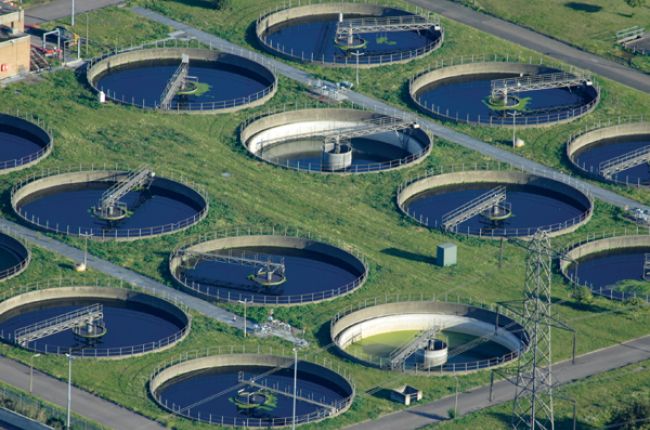Strategic Approaches to Enhance Drainage Therapy Performance and Lessen Ecological Impact
In the realm of waste water therapy, the mission for boosted performance and minimized environmental impact is a perpetual obstacle that requires critical services. The assimilation of innovative treatment modern technologies, energy-efficient procedures, resource recuperation strategies, improved nutrient removal methods, and smart monitoring and control systems represents a diverse structure for resolving these pressing worries.
Advanced Treatment Technologies
Sophisticated membrane layer purification systems have actually transformed innovative wastewater treatment procedures, significantly enhancing the removal of contaminants. These cutting-edge systems work forcibly water via a semi-permeable membrane, efficiently separating contaminations from the water stream. The membrane layer's microscopic pores catch pollutants such as bacteria, infections, and suspended solids, allowing just cleansed water to go through. This innovation has actually confirmed to be highly effective in eliminating a wide variety of contaminants, including pharmaceuticals, heavy metals, and natural substances, which are frequently testing to remove with standard therapy methods.
In addition, membrane layer filtration systems provide various advantages over standard treatment approaches. They call for much less area, produce higher-quality effluent, and are more immune to changes in influent water quality. Furthermore, these systems are extremely versatile and can be quickly incorporated into existing therapy plants or utilized as standalone systems for decentralized applications. As the demand for clean water continues to increase, the fostering of innovative membrane filtration modern technologies is important to make sure sustainable and efficient wastewater treatment methods.
Energy-Efficient Procedures
The integration of energy-efficient procedures in wastewater therapy systems is vital for maximizing resource utilization and decreasing operational expenses. By applying energy-efficient modern technologies, therapy plants can considerably reduce their carbon impact and general environmental impact. One crucial method to improving power effectiveness in wastewater treatment is the use of innovative oygenation systems, such as great bubble diffusers or surface aerators, which can improve oxygen transfer effectiveness and reduce energy usage. Additionally, including power recuperation systems, like anaerobic food digestion for biogas manufacturing or making use of excess warm for thermal processes, can aid balance out power demands and advertise sustainability.
In addition, maximizing process control and automation with using innovative sensing units and keeping track of systems can improve general energy efficiency by readjusting operations in real-time based upon actual demand and problems. Applying energy audits and consistently monitoring energy efficiency signs are necessary practices to determine locations for enhancement and track energy-saving efforts properly. Generally, the fostering of energy-efficient procedures in wastewater treatment not just profits the environment however also adds to long-term expense savings and operational sustainability.
Resource Recovery Methods
With a concentrate on enhancing resource application and sustainability in wastewater therapy systems, the implementation of source recuperation techniques becomes a critical element in enhancing functional efficiency. Resource recuperation methods in wastewater therapy entail the identification and removal of valuable resources from the waste stream, thereby transforming what was as soon as thought about waste into a useful possession. By carrying out source recovery techniques such as nutrient removal and healing, energy generation from natural issue, and the manufacturing of recyclable water, Get More Information wastewater therapy plants can decrease ecological effect while taking full advantage of performance.

Improved Nutrient Removal Techniques
Implementing sophisticated nutrient removal strategies is necessary for maximizing the efficiency of wastewater therapy systems. visit here One of the crucial methods made use of for improved nutrient removal is the procedure of organic nutrient elimination (BNR), which involves the elimination of nitrogen and phosphorus with biological procedures.

In addition to BNR, advanced treatment methods such as membrane bioreactors (MBRs) and built wetlands can likewise be used to enhance nutrient removal efficiency. By incorporating these innovative nutrient removal strategies into wastewater treatment systems, municipalities and sectors can successfully decrease nutrient pollution and safeguard the environment.
Smart Tracking and Control Solution
Using advanced innovation, the assimilation of clever tracking and control systems transforms the operational performance of wastewater treatment centers. These systems include advanced sensing units and data analytics to continuously monitor crucial criteria such as pH levels, turbidity, liquified oxygen, and flow rates in real-time. By click over here gathering and analyzing this information, drivers can obtain beneficial understandings into the efficiency of the treatment procedures, making it possible for proactive changes to maximize therapy efficiency.
Smart surveillance and control systems additionally sustain remote surveillance capacities, enabling drivers to access real-time data and control functions from off-site areas. This remote availability enhances operational flexibility and responsiveness, making it possible for swift interventions in case of system breakdowns or changes in influent quality. Additionally, the predictive upkeep capabilities of these systems help protect against tools failures and reduce downtime, ultimately boosting the general reliability of wastewater therapy operations (Waste Water Treatment).
Final Thought
In verdict, tactical methods such as advanced therapy technologies, energy-efficient processes, resource recuperation methods, boosted nutrient elimination techniques, and clever tracking and control systems play a crucial role in improving wastewater treatment efficiency and reducing environmental influence. By executing these methods, wastewater treatment plants can boost their general performance, decrease power intake, recoup beneficial sources, and make sure conformity with ecological regulations. These strategies are vital for efficient and lasting wastewater monitoring techniques.

In final thought, tactical strategies such as innovative therapy technologies, energy-efficient processes, resource recuperation strategies, improved nutrient elimination strategies, and wise monitoring and control systems play a critical function in enhancing wastewater therapy performance and minimizing ecological impact.